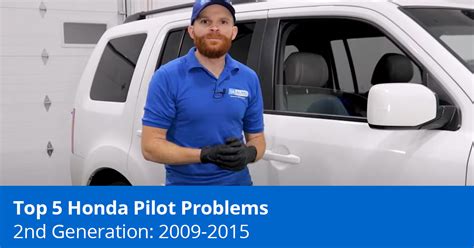
2013 Honda Pilot: Unveiling and Analyzing Common Problems
The 2013 Honda Pilot, a three-row SUV, made its debut as a versatile and spacious family vehicle. While it garnered praise for its fuel efficiency and comfortable ride, it was not without its share of problems. This comprehensive analysis delves into the most prevalent issues reported by 2013 Honda Pilot owners, shedding light on their causes and potential solutions.
1. Transmission Issues: A Troubling ExperienceTransmission problems emerged as a significant concern among 2013 Honda Pilot owners. Many reported experiencing rough shifting, delayed gear engagement, and even complete transmission failure. These issues were particularly noticeable during acceleration, gear changes, and highway driving.
Possible Causes:
- Faulty transmission control module (TCM)
- Defective torque converter
- Worn or damaged transmission components
Potential Solutions:
- Software updates for the TCM
- Replacement of the torque converter
- Overhaul or replacement of the transmission
Engine misfires, characterized by a rough idle, lack of power, and increased emissions, were also reported by several 2013 Honda Pilot owners. These issues often manifested during acceleration or under heavy loads.
Possible Causes:
- Faulty ignition coils
- Clogged or fouled spark plugs
- Defective fuel injectors
- Intake manifold leaks
Potential Solutions:
- Replacement of faulty ignition coils and spark plugs
- Cleaning or replacing fuel injectors
- Repairing intake manifold leaks
Electrical issues plagued some 2013 Honda Pilot models, causing a range of problems from flickering lights to complete electrical failure. These issues could manifest as battery drain, faulty sensors, or malfunctioning electronic components.
Possible Causes:
- Defective battery
- Loose or corroded electrical connections
- Faulty alternator or starter
- Software glitches
Potential Solutions:
- Battery replacement
- Cleaning and tightening electrical connections
- Replacement of faulty electrical components
- Software updates
Some 2013 Honda Pilot owners encountered suspension problems that resulted in a rough and uncomfortable ride. These issues ranged from worn shocks and struts to faulty control arms and ball joints.
Possible Causes:
- Worn or damaged shocks and struts
- Defective control arms and ball joints
- Misaligned wheels
Potential Solutions:
- Replacement of worn or damaged suspension components
- Wheel alignment
Brake issues were also reported by a number of 2013 Honda Pilot owners. These problems included premature brake wear, squealing or grinding noises, and reduced braking performance.
Possible Causes:
- Defective brake pads or rotors
- Contaminated brake fluid
- Faulty brake calipers
Potential Solutions:
- Replacement of brake pads and rotors
- Brake fluid flush
- Repair or replacement of faulty brake calipers
While the 2013 Honda Pilot has received accolades for its practicality and comfort, it is not immune to mechanical problems. The issues discussed in this article, ranging from transmission failures to electrical glitches, can be frustrating for owners. However, by understanding the possible causes and potential solutions, drivers can work with qualified mechanics to address these problems effectively. Regular maintenance, timely repairs, and software updates can help prevent or mitigate these issues, ensuring a safer and more enjoyable driving experience.